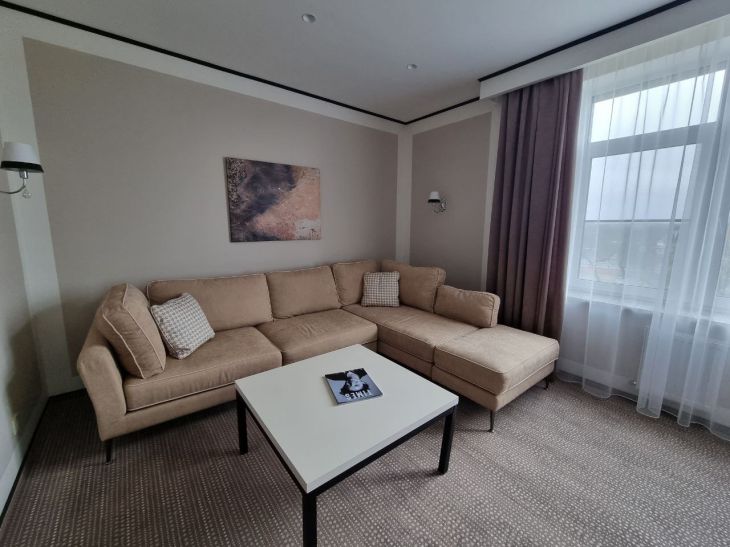Zoning space helps to divide the space in the room in the best way and use the area to the maximum.
This is especially important if the room is small.
Here it is necessary to think very carefully about what and how to place, what furniture to use, what colors/textures to choose, and so on.

Therefore, let's take a detailed look at how to zone a small living room, says Yulia Tychino .
Determining the number of zones
A small space is not a reason to give up something! You just need to distribute the space correctly.
Therefore, the first and main thing that needs to be done before zoning the space is to determine the number of zones in the living room. But select the zones in such a way that you can create a "unified and harmonious picture."
For example, in a room you can simultaneously arrange a small study, a recreation area and a library. They go well together. Therefore, they will not "drag" attention to themselves.
Making a preliminary sketch/plan
This must be done, even if you can't draw! Why? The reason is quite simple: it is much better to mark the "zones" of each name on paper. It is worth noting right away that this will take a lot of sheets. But it is better to spend several sheets than to rearrange them later or argue with your family about a not very good layout.
Selection of partitions
The most interesting and “important” furniture in the entire living room when zoning the space.
Manufacturers offer a wide selection: from externally monolithic and sliding to light and openwork, more reminiscent of intertwining branches.
If you decide to combine several zones into one room, then you should take a closer look at partitions with shelves and niches. Since they can be used not only to divide the space, but also to place a large number of things.
Particular attention should be paid to the material from which the partitions are made. There are also a large number of them. The strongest and most reliable are wood (not MDF or chipboard!) and metal. Less reliable materials when used as niches for storing things are plastic and glass.
Finishing
Another way that will help you quickly and inexpensively zone the space.
For example, you can choose a different color or texture of flooring in each zone: a soft carpet in the library, light laminate in the recreation area, and dark laminate or even parquet in the study. This way, you can visually separate all the zones without compromising the space.
Podium arrangement
This is also a very effective method that helps not only to visually highlight the space, but also to create a full-fledged separate zone. Without much damage to the rest of the space.
For example, the recreation area can be slightly raised in relation to the library or study. Then it will be possible to create small "secluded corners" where you can quietly read or work.
Curtains
A controversial option for a small living room. But you can try. After all, everything depends on the interior style that “reigns” in the house.
It is worth noting that when choosing curtains for zoning, you need to clearly understand which zones you are highlighting. The choice of material and color of the curtain will depend on this.
For example, thick velvet curtains of dark shades without a pattern will create an intimate and romantic atmosphere. They can be used in the library area. They will "help" to immerse yourself in the atmosphere of the book, to better understand the plot.
But light curtains made of organza or large bead threads in neutral light tones (golden, pink, white, light brown, soft green) are perfect for an office or a recreation area. Since they will not hide the space, and will help to get into the mood for work.









